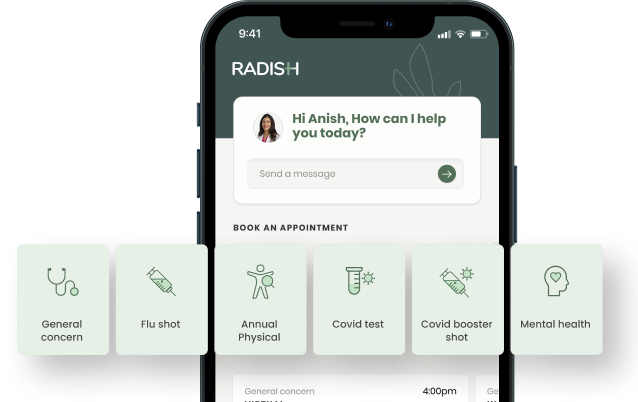Migraines & Headaches: What You Need to Know

Dr. Jason Sellers
Did you know that June is National Migraine and Headache Awareness Month? Many of us have had a headache at some point in our lives, and across the globe headaches are one of the most common medical conditions. According to the World Health Organization (WHO), about 1 of every 2 people experiences headache at least once per year, and up to about three quarters of people aged 18-65 have had a headache in the past year.

What you might not know is that headaches come in many shapes and forms, and their effects can range from a minor nuisance to life-altering. Fortunately, the vast majority of headaches are not life-threatening. Let’s dive into it a little bit more:
What are the different types of headaches?
The three most common types of headaches are tension, migraine, and cluster. Most people have heard of migraines and tension headaches, as both are quite common, although cluster headaches tend to be less well known. While all of these headaches can share common features, they also differ in important ways. It’s important to know which kind of headache you are experiencing because the treatment options differ. For anyone who is experiencing new or worsening headaches, you should speak with your doctor.
Tension headaches
Tension headaches tend to be marked by a feeling of pressure or tightness on both sides of the head or neck, usually mild to moderate dull pain that is constant and not throbbing. It is oftentimes associated with tenderness in the surrounding muscles, but usually not associated with other symptoms. These headaches can last from a half hour to up to a week.
Migraine headaches
Migraines differ from tension headaches in many ways. The pain tends to be more severe and throbbing in nature, and in the majority of people, it is only on one side, though may be on both sides for some. Oftentimes the headache can be associated with other symptoms such as nausea or vomiting, or sensitivity to light or noise. Sometimes people will have an “aura” before getting headaches, which can include seeing lights or smelling something unusual. They can last anywhere from 4 hours to 3 days.
Cluster headaches
Cluster headaches are much less common than the other two, affecting less than 1% of people. They typically occur several times over a period of weeks to months and then resolve for a while, and tend to be much more severe than the other types. They also usually only occur on one side of the head, typically around the eye or temple. The duration is usually between 15 minutes and 3 hours, so much shorter than the other types, however, the pain reaches a peak very quickly and can be debilitating for some. Sometimes it can be associated with eye redness, tearing, and nasal congestion or runny nose.
What are some other types of headaches?
There are actually many other types of headaches that don’t quite fit into any of the categories above and usually have other causes. For example, some people can get rebound headaches if they take medication too often, which causes headaches to come back worse when the medication effect wears off. Headaches may also be caused by physical trauma and occur for several days after a head injury. Sinus headaches are relatively uncommon, but those with chronic sinus symptoms may experience facial pain related to their sinus symptoms. Another common cause of headaches is osteoarthritis in the upper neck.
If you have experienced any of these other types of headaches, it’s best to consult with your doctor to confirm the diagnosis and learn more about the best way to treat the symptoms.
What is the treatment for headaches?
Oftentimes over-the-counter pain medications such as acetaminophen or ibuprofen are enough to treat many common headache types. For those with migraine headaches and some with tension headaches, you may also find it helpful to lie down in a cool, dark, quiet room to seek some relief without medication. Prescription medications and even physical therapy can also be extremely effective depending on the headache type. Before taking any type of medication you should speak with your doctor to make sure that it is safe for you.
What can I do to prevent headaches?
Depending on the types of headaches you experience, there are a number of things you can do to prevent them from returning. For many people, it can be helpful to keep a headache diary, where you can keep a log of what symptoms you experience, what happened right before, and what happened after treating it. This can help you pick up on patterns so that you may be able to avoid certain triggers in the future or prioritize certain treatments that worked in the past.
Some common headache triggers include stress, skipping meals or becoming dehydrated, poor sleep habits, caffeinated beverages, alcohol, and certain foods or drinks or smells. For many of these causes, avoiding the trigger or managing stress can be an important way to prevent headaches from occurring in the first place. If this is not successful, there are also some prescription medications that can be used when you talk with your doctor.
When should I see a doctor?
While brain tumors are a possible cause of headaches, they are extremely rare and the vast majority of headaches are caused by something else. That said, there are certain things to look out for which should prompt an urgent visit to your doctor or emergency room. This would include a headache that comes on very suddenly in the span of seconds to minutes and could be described as “the worst headache of your life,” or if you’ve had a change in quality from the headaches you’ve experienced in the past or a new headache when you don’t usually get them at all.
Additional signs to look out for include severe symptoms in conjunction with neck stiffness or fever, feeling confused or fainting, new symptoms after exercise or a minor injury, or associated symptoms including muscle weakness, numbness, tingling, or vision changes. Sometimes these symptoms can be a normal part of migraine headaches, but it is still important to talk to your doctor.
More information
Headaches tend to be more common in women and can be a huge burden on quality of life and functioning at school or at work. If you experience headaches frequently we encourage you to make an appointment with a Radish doctor to talk more about your treatment options.
Request a Free Demo
Learn how Radish Health can help you improve employee health and save on healthcare.
Request a Demo